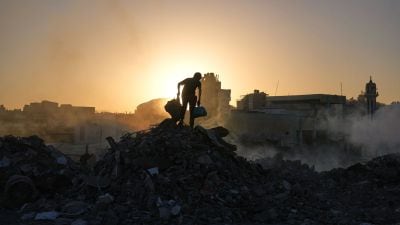Soon,spacecraft firing harpoons to collect samples from comets
Scientists at NASA are in the early stages of working out the best design for a sample-collecting comet harpoon.
Scientists at NASA want to send a spacecraft that will meet with a comet and then fire a harpoon to rapidly acquire samples from specific locations with surgical precision while hovering above the target.
Using this standoff technique would allow samples to be collected even from areas that are much too rugged or dangerous to permit the landing and safe operation of a spacecraft.
Scientists at NASAs Goddard Space Flight Center in Greenbelt,Md. are in the early stages of working out the best design for a sample-collecting comet harpoon. In a lab the size of a large closet stands a metal ballista nearly six feet tall,with a bow made from a pair of truck leaf springs and a bow string made of steel cable 1/2 inch thick.
The ballista is positioned to fire vertically downward into a bucket of target material. For safety,its pointed at the floor,because it could potentially launch test harpoon tips about a mile if it was angled upwards. An electric winch mechanically pulls the bow string back to generate a precise level of force,up to 1,000 pounds,firing projectiles to velocities upwards of 100 feet per second.
Donald Wegel of NASA Goddard,lead engineer on the project,placed a test harpoon in the bolt carrier assembly,steps outside the lab and moves a heavy wooden safety door with a thick plexiglass window over the entrance.
After dialling in the desired level of force,Wegel flipped a switch and,after a few-second delay,the crossbow fires,launching the projectile into a 55-gallon drum full of cometary simulant sand,salt,pebbles or a mixture of each. The ballista produced a uniquely impressive thud upon firing,somewhere between a rifle and a cannon blast.
We had to bolt it to the floor,because the recoil made the whole testbed jump after every shot, Wegel said.
Were not sure what well encounter on the comet the surface could be soft and fluffy,mostly made up of dust,or it could be ice mixed with pebbles,or even solid rock. Most likely,there will be areas with different compositions,so we need to design a harpoon thats capable of penetrating a reasonable range of materials.
The immediate goal though,is to correlate how much energy is required to penetrate different depths in different materials. What harpoon tip geometries penetrate specific materials best? How does the harpoon mass and cross section affect penetration? The ballista allows us to safely collect this data and use it to size the cannon that will be used on the actual mission, he said.
At the moment,the team is working out the best tip design,cross-section,and explosive powder charge for the harpoon,using the crossbow to fire tips at various speeds into different materials like sand,ice,and rock salt.
They are also developing a sample collection chamber to fit inside the hollow tip.
It has to remain reliably open as the tip penetrates the comet”s surface,but then it has to close tightly and detach from the tip so the sample can be pulled back into the spacecraft, Wegel said.
Finding the best design that will package into a very small cross section and successfully collect a sample from the range of possible materials we may encounter is an enormous challenge, he said.
According to the team,the spacecraft will probably have multiple sample collection harpoons with a variety of powder charges to handle areas on a comet with different compositions,according to the team.







